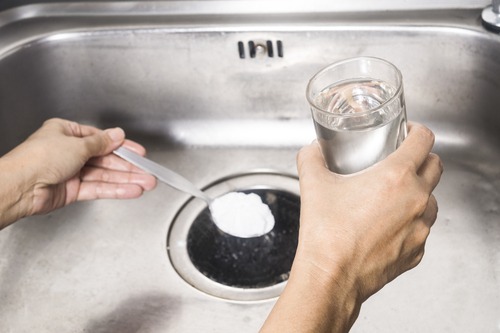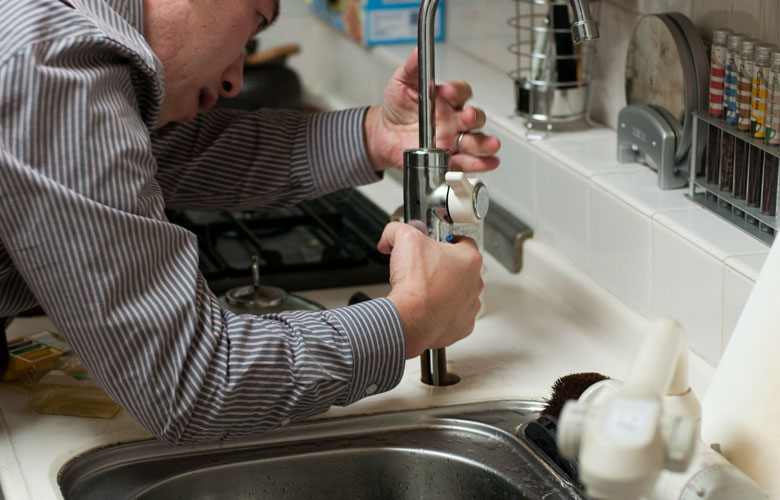How do you feel about Some easy tips to fix blocked drains?

Introduction
Handling a blocked drain can be an aggravating experience, disrupting everyday activities and potentially creating damage to your residential property. Nevertheless, before reaching out to plumbing professionals, there are actions you can take to deal with the problem yourself. In this overview, we'll discover do it yourself options and preventive measures to deal with an obstructed drainpipe effectively.
Determining the Concern
The very first step in resolving an obstructed drainpipe is acknowledging the indications. Slow-moving water drainage, gurgling sounds, foul odors rising from drains pipes, or water backing up are common signs of an obstructed drainpipe. Identifying these signs early can assist stop additionally complications.
Selecting the Right Plumbing Solution
When picking a pipes solution, consider factors such as experience, licensing, and client testimonials. Select a trusted plumbing technician with a track record of top quality craftsmanship and transparent rates practices.
Expense Considerations
The cost of specialist drain cleaning services can vary depending on the severity of the obstruction and the plumbing technician's prices. Demand quotes from multiple companies and ask about any added fees to guarantee transparency and avoid shocks.
Safety and security Precautions
When trying DIY drain cleansing, focus on safety. Wear safety gloves and eyeglasses to stay clear of contact with damaging chemicals or bacteria. Never ever blend different drain cleaning products, as this can generate unsafe fumes.
Instance Studies
Real-life examples illustrate the efficiency of do it yourself solutions and the importance of timely specialist intervention in settling drainpipe blockages.
Usual Causes of Blocked Drains
Comprehending the elements that add to drain pipes clogs is essential for reliable resolution. Typical culprits include hair, soap residue, grease, food debris, and foreign things like sanitary products or paper towels. Tree origins invading underground pipes can also cause significant blockages.
DIY Solutions
For small clogs, numerous do it yourself services can be effective. Putting boiling water down the drainpipe can help dissolve grease and particles. Sodium bicarbonate and vinegar or a mixture of salt and cooking soda can act as all-natural cleaners. Making use of a plunger or pipes snake to displace obstructions is an additional option.
Devices and Equipment
Having the right tools accessible can make DIY drainpipe cleaning much more reliable. A plunger is a flexible device for removing blockages in sinks, bathrooms, and showers. A pipes serpent or auger can get to deeper clogs, while drainpipe cleansing chemicals can be made use of very carefully for persistent blockages.
Preventive Measures
To stay clear of future clogs, adopting preventive measures is essential. Mount drain guards or filters to catch hair and particles before they get in the pipelines. On a regular basis flush drains pipes with warm water to dissolve grease accumulation, and stay clear of taking care of grease or strong waste down the tubes.
When to Call a Specialist
While DIY solutions can deal with small obstructions, particular signs indicate the need for professional aid. Relentless clogs, foul odors despite cleansing efforts, or multiple drains supporting simultaneously are red flags that warrant expert treatment.
Final thought
By complying with the ideas outlined in this overview, you can successfully tackle obstructed drains pipes and avoid future plumbing problems. Whether going with DIY services or looking for expert support, punctual action is key to maintaining a healthy and balanced plumbing system and maintaining the integrity of your home.
How to Clear a Clogged Drain Yourself (And When to Call In the Professionals)
What Can Clog a Drain
- Dirt
- Skin flakes
- Hair
- Grease
- Soap scum
- Food
- Offset pipes
- Tree roots
- Small objects
- Mineral buildup
DIY Tricks to Unclog a Drain
You can fix this! Once you have identified the source of the clog (or have a vague idea), you can try one or a combination of these fixes in order to clear your plumbing.
Wire Hanger or Snake
Untangle and clear out hair from a drainpipe with a homemade snake. Use a straightened-out wire hanger with a 90-degree angle hook to locate the clog and drag out any unwanted material.
Remember not to push the clog further down to where the wire hanger cannot reach! If you need to follow up with a plunger, give it a try. Your efforts might be more successful after it’s been wire-snaked.
If you want to get fancy and don’t have a wire hanger to spare, head to the store and pick up a hand-operated drain snake. You can get one for $10-$30. It may save you the hassle, and provide additional length to reach deep into the clogged pipe.
Plunger
A cup plunger has a suction cup attached to a wooden handle. The rubber creates a seal around the drain, and increases the pressure force of the plunger.
Plunge for 30-second increments to loosen the clog. This may need to be repeated over the course of 15-20 minutes. Once plunged, run the water to flush the remaining material out of the drain.
Remember– never use a plunger if you have used a chemical drain cleaner. These chemicals can splash up from the force of the plunger and cause serious injury or burns.
Boiling Water
Hot water can sometimes break up materials into a flushable amount. Dirt, grease, and soap buildup requires heat in order to unstick from surfaces.
Take your kitchen kettle and heat your water to a boil. Once it reaches a rolling boil, pour it directly down the drain into the blockage. Carefully follow with plunging, if necessary.
Don’t worry if this takes more than one try! It can often take multiple kettles and repeated plunging in order to clear a particularly stubborn clog.
Chemical Drain Cleaner
As a last resort, pick up a bottle of chemical drain cleaner. Drain-cleaning chemicals are potent, and not very good for the environment.
You may need to wear protective eyewear in gloves before handling your bottle of chemical drain cleaner. Follow the instructions printed on the bottle, and flush with water as soon as the instructions allow. Do not follow with plunging.
Baking Soda and Vinegar
As a safer alternative to chemical drain cleaner, baking soda and vinegar can create a chemical reaction that clears tough clogs.
Combine one cup of cleaning vinegar with one cup of boiling water, and set aside. Once you have done this, pour half a cup of baking soda down the drain. Give the baking thirty seconds to settle and cover a large portion of the problem drain.
Following the baking soda, pour down your vinegar and hot water solution. Once the vinegar and baking soda combine, the mixture will bubble and fix. Let this reaction fizzle in the drain for about an hour.
After an hour, follow with a kettle’s worth of hot water. The heat and liquid should flush out any remaining material.
When to Call a Plumber
If your DIY attempts haven’t cleared your clog drain, it’s time to call in a professional. It’s not worth losing access to your kitchen sink or high-traffic bathroom. A clog in a vital area can keep you from the things you’d rather be doing, and derail your routine.
Anytime a clog is causing water to spread is a time to call in a plumbing service. What starts out as a little bit of water can quickly grow into serious, expensive water damage.
Additionally, a serious clog can result in burst pipes or serious leaks. Make sure you know when to take it seriously!
https://myguysnow.com/how-to-clear-a-clogged-drain-yourself-and-when-to-call-in-the-professionals/

I was guided to that article on How to handle a clogged drain in your home from someone on a different web page. Sharing is good. You just don't know, you might be doing someone a favor. I praise you for your time. Kindly check our blog back soon.
Call
Comments on “Strategies to Tackle a Blocked Drain Before Calling in Plumbing Professionals”